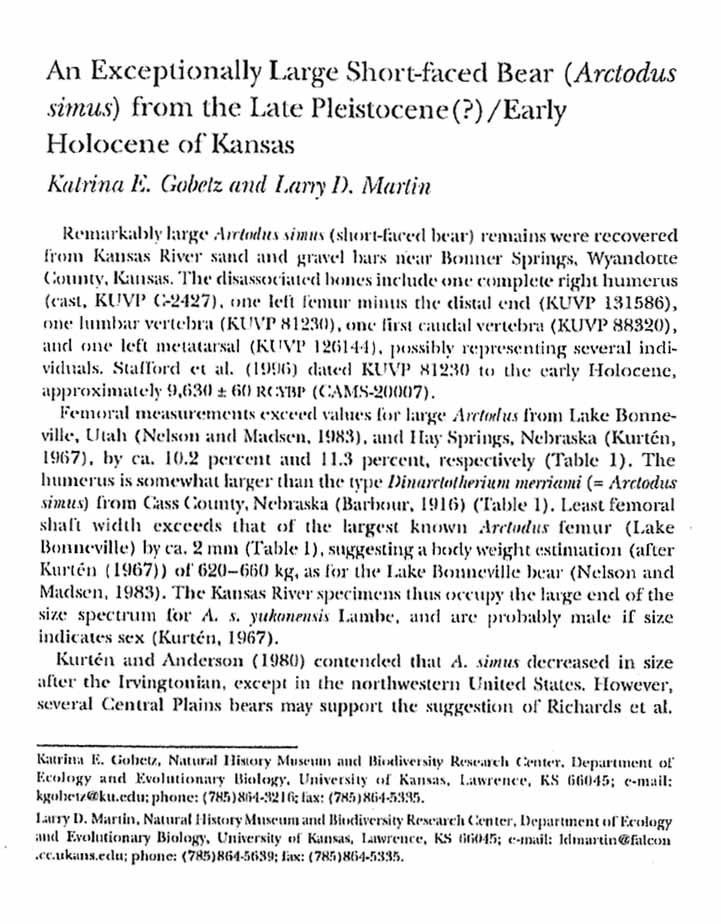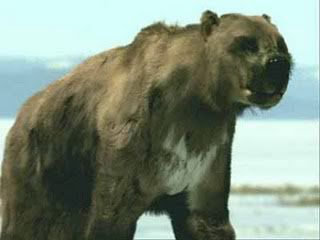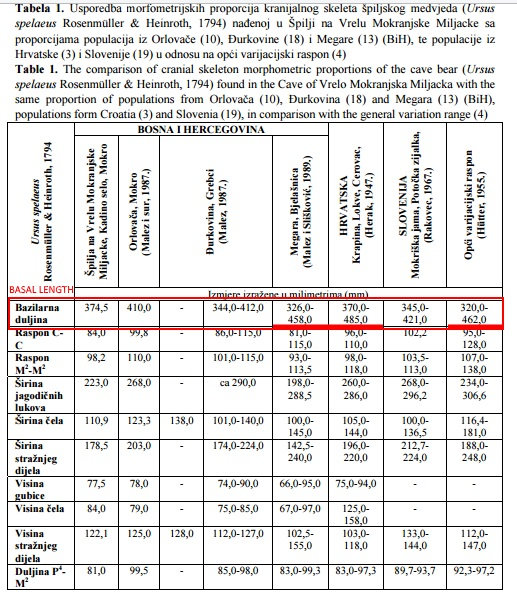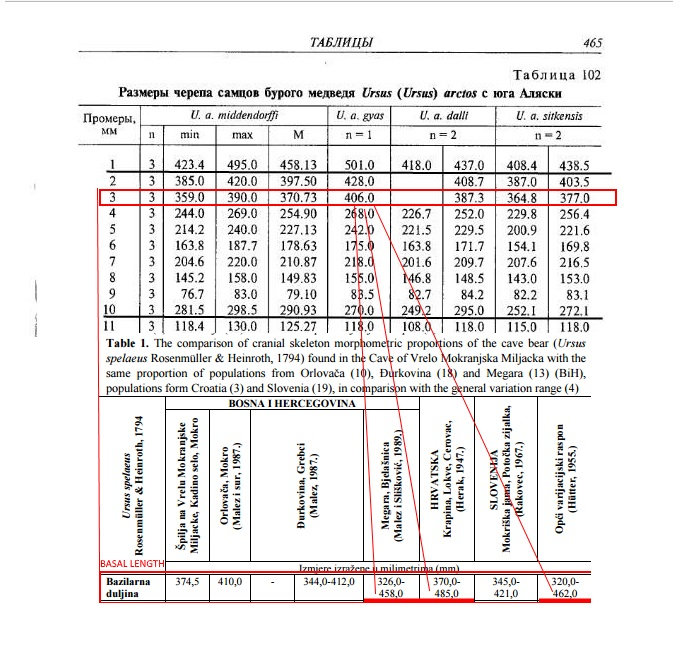Post by grrraaahhh on Aug 19, 2012 4:46:51 GMT -9
Any info on ulna or radii?
In some cases, yes. Also, I think there is interest for an inventory of materials. If there are measurement info not posted but you are interested in let me know.
Kansas River Specimen

link
Femur, KUVP 131586 (note: the distal end for the left femur is missing)
Greatest ant./postr. prox. width: 193.7
Least transv. shaft width: 65.7
Ant./postr. caput diameter: 83.2
Irvingtonian, Alameda County, CA.
Material: skull portion, mandibular symphysis, radius and ulna fragments (UC 40086); R maxilla fragments (4288); femur (UC447); femur distal end (UC56085); humerus, proximal end (UC56086); ulna (UC44686); ulna, distal end (UC67820).
UC 44686 (Longest GSFB ulna fossil)
Ulna measurements
A: 591
B: -
C: 65
D: 47
E: 35.2
A. Greatest Length.
B. Proximal diameter from tip of coronoid progress to Margo dorsalis.
C. Smallest diameter from bottom of semi circular notch to Margo dorsalis..
D. Inner diameter of semi circular notch.
E. Least transverse diameter of shaft, above capitulum.
Source: Kurten, 1967.
UC 400862
Radius measurements
A: e495
B: a71
C: a54
D: ---
E: ---
F: ---
A. Greatest length.
B. Proximal end, long diameter.
C. Proximal end, short diameter.
D. Middle of shaft, short diameter.
E. Distal end, long diameter.
F. Distal end, short diameter.
F2: Length estimated from associated ulna.
Source: Kurten, 1967.
UC 44687 (2nd longest GSFB femur)
Femur Measurements
A. 678
B. a165
C. 77
D. 62
E1. 134
A. Greatest Length.
B. Greatest proximal width.
C.Caput diameter.
D. Least transverse width of shaft.
E. Greatest distal width over epicondyles.
Source: Kurten, 1967.
Lake Bonneville, Salt Lake Co. Specimen
Silver Creek, Salt Lake Co. [Monroc, Kearns Pits] [Lake Bonneville, Provo Shoreline]
Material: L femur, tibiae, three vertebrae, partial pelvis (UVP O15/1-7)
Data for the Lake Bonneville GSFB from Nelson and Madsen (1983).
UVP 015/1 (longest GSFB femur fossil)
Femur measurements (mm)
Greatest length: 723
Greatest proximal width: 191
Caput diameter: -
Least transverse width of shaft: 64
Greatest distal width over condyles: 152
Tibial measurements (mm)
UVP 015/2
Greatest length: 524
Greatest proximal width: 152
Least width of shaft: 50.15
Greatest distal width: 119
UVP 015/3
Greatest length: 522
Greatest proximal width: 155
Least width of shaft: 50
Greatest distal width: 119
Width of shaft in percent of total length of the tibia in Arctodus simus
Arctodus simus (Salt Lake County)
Number of Specimens: 2
Range: 9.6
Mean: 9.6
Measurements (mm) of pelvis in Arctodus simus.
UVP 015/7
Ilium, length from rim of acetabulum to anterior border: 273±
Ilium, greatest width: 239±
Ilium, least width of neck in front of acetabulum: 84
Acetabulum, transverse diameter: -
Obturator foramen, greatest anteroposterior diameter: 127
Obturator foramen, greatest dorsoventral diameter: -
Measurements (mm) of vertebral centra in Arctodus simus
UVP 015/4 L2?
Length: 66
Width: 93
Depth: 66
Hay Springs, Sheridan Co.
Material: skull with mandible; R femur; L, R tibiae, L, R fibulae; R radius, proximal and distal ends, R calcaneum, R astragalus, patella; L metatarsals III, IV, V; R metatrsals III & IV (F:AM25531) [MNI=1?]; metacarpal I (25537); R metacarpal III (25636); L metacarpal IV (1914); R ulna end (25537); upper L canine (Bx 25, TCM, 1930).
F:AM 25531 Radius measurements (mm)
A: ---
B: 68
C: 52
D: ---
E: 97
F: 64
A. Greatest length.
B. Proximal end, long diameter.
C. Proximal end, short diameter.
D. Middle of shaft, short diameter.
E. Distal end, long diameter.
F. Distal end, short diameter.
Source: Kurten, 1967.
FA: AM 25531 Femur measurements (mm)
A. 658
B. 155
C. 77
D. 62
E1.137
A. Greatest Length.
B. Greatest proximal width.
C. Caput diameter.
D. Least transverse width of shaft.
E. Greatest distal width over epicondyles.
Source: Kurten 1967.
No ulna info for Hay Springs specimen.
Note: According to Barbour, material for the Cass County GSFB is limited to one humerus fossil.
Quick question: is transverse diameter really less than anteroposterior diameter of that A. simus specimen?
I think you are referencing the Cass County GSFB. What is weird is that Kurten provides this data where as the 1916 Barbour literature does not. The 1916 document has a lot more humerus/fossil measurement info - all the other info from Kurten (1967) was already published by Barbour which Kurten cites as his primary source for specimen info.
Now, I really hope that more mature male Arctotherium angustidens specimens are found (I hope you're right about that). Would be amazing to discover more such massive bones; with a larger sample some may exceed even these A. simus specimens in size.
I should clarify one thing about the fossil record A.angustidens. There are other specimens (e.g., female and her offspring) but our interest is with the mature/large specimens from the Ensenadan Age. Also, when I talk about the the scarcity of mature GSFB specimens, I am comparing their fossil record to their prehistoric contemporaries like dire wolf or the saber-toothed cat. Even though the GSFB lived a nomadic life I am hopeful for more fossil discoveries.
Basically, one of the points I wanted to get across with the GSFB/AMERICAS fossil comparisons and the earlier Arctotherium angustidens excitement (which is well justified) was to highlight the fact there were some exceptional North America GSFB specimens too.
It is also unfortunate we don't have any measurements about the humerus of the specimen UVP015 (arctodus), we could have made body mass estimations of KUVP C-24-27 as we have a body mass estimation of UVP015...

Source: Figueirido et al. (2010).
The short faced bear UVP015 is estimated to have weighted 957 kg, but: does this value include a high percentage of fat like brown bear before hibernation?
In other words: did arctodus hibernate?
In other words: did arctodus hibernate?
The evidence for hibernation is not so clear.









